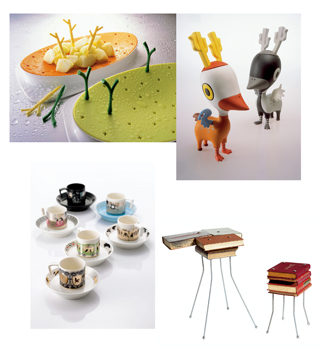Taiwan Design Colors TiFS 2008 With Oriental Attitude
2008/06/16 | By Judy LiThe furniture-manufacturing sector in Taiwan achieved consistent and steady growth for some 80 years prior to the 1990s, when rising costs of land and labor on the island forced the operators' hand, with droves relocating their factories to China and later Vietnam. And new challenges have risen in recent years-where globalization and rapidly developing emerging economies have set up new rivalries-with one such example being the recent lifting of export incentives by the mainland Chinese, as well as gradually rising wages in China and growing eco-consciousness worldwide, which inevitably lead to higher production costs as more stringent, green codes must be met. A few years ago, TAITRA, the semi-official trade promoter in Taiwan, rekindled the idea of staging a world-class furniture show in Taipei. The response has been brisk and at least one new offshoot has been grafted onto the Taipei International Furniture Show (TiFS).
Not to be left behind the increasingly popular, globally relevant green movement that is inherently attached to the living "slowly" concept, the Taiwan Design Center, the government-backed body, mapped out a program to perhaps give a distinctive personality to the 2008 TiFS, which ran from Feb. 28 to Mar. 2. Titled "Taiwan Design: Oriental Attitude," this eco-oriented theme also contained a series of international furniture seminars focused on "Green Design & Slow Life."
Taiwan Design: Oriental Attitude was the stage upon which two sub-themes were given opportunities to come alive. One was the "Creative Ideas of Taiwan Themes" and the other "Home Decor in Taiwan Life," with "Elements of Taiwan Style" being the backbone of the former, whereby 26 designers were called upon to brainstorm, build designs that are quintessentially Taiwanese, or works that fully reflect the rich cultural experience and characteristics of Taiwan; while "Home Decor in Taiwan Life" was the platform for 14 design companies and Taiwan interior decor sector to showcase their creations.
Slowly Living the Good Life
To highlight the current trends in the marketplace that places perhaps equal emphasis on environment protection and high-quality living, the organizer included four seminars as part of the "Taiwan Design" program, with each topic focused on "Green Design & Slow Life."
One of the noteworthy aspects of the Taiwan Design program is the show's obvious individuality, refusing to cater to the often ubiquitous demand for westernized furnishings in Taiwan, especially at the top-end of the segment; while the wide- ranging creations shown also clearly breathed nature and its essence. If nothing else, the designers who displayed their wares obviously were in tune to natural rhythms and fauna. It was apparently an ideal occasion to enable the furnishing design sector in Taiwan to show its brand of creativity and originality, hence taking oriental design a step closer to the global market.
The furnishing segment has seen new niches developed, with a few tapping the dexterous hand craftsmanship of the Far East. One example is the handmade rugs being made-to-order by Turkish and Chinese artisans for discriminating buyers worldwide that can retail for thousands of greenbacks and serve as centerpieces in stately homes. With its long-standing reputation as a world-class furniture supplier, Taiwan and its furnishing designers may have their work cut out to promote creative, original pieces to global markets. This year's Taiwan Design thematic exhibition overwhelmingly saw the young designers favor the simple oriental culture, which not only boosted their confidence but also allowed them to boldly paint the show in bizarre and unique strokes.
Quality not quantity prevailed at the "Taiwan Design" zone, where small-scaled items were the norm, including candlestick vases, artistic teapots, gourd-shaped pottery, screw-like tea sets, fruit-shaped dishes and tree-like forks, button teacups, 3D chandeliers, LED track lights, LED decorative lamps, uniquely-formed hangers, elegant benches, and plentiful handicrafts.





